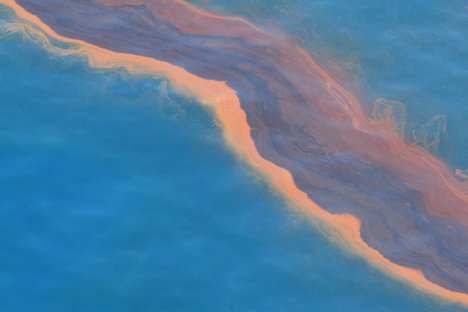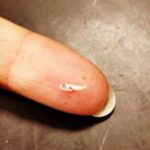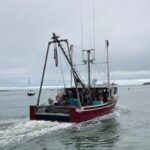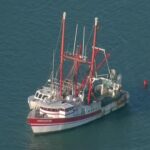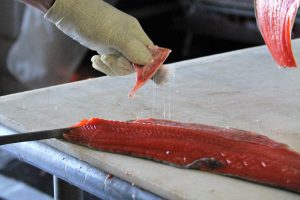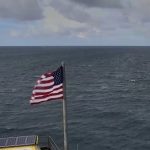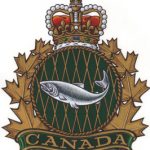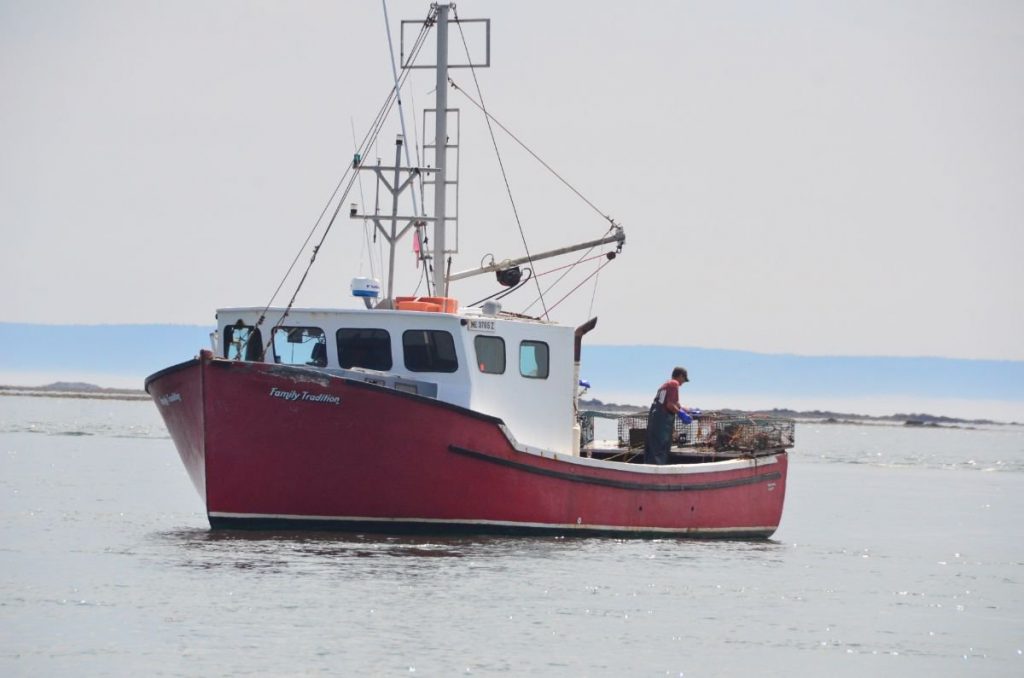Tag Archives: Woods Hole Oceanographic Institution
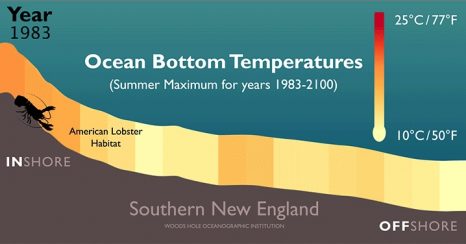
Feeling the Heat in the NW Atlantic
Rising temperatures along the bottom of the Atlantic Ocean will force American lobsters (H. americanus) farther offshore and into more northern waters, according to a new study led by researchers at the Woods Hole Oceanographic Institution (WHOI). Climate models project that bottom temperatures in the Atlantic along the U.S. East Coast may rise by up to 4.3 °C (7.7 °F) by the end of the century. “That’s a significant change, and lobsters are particularly sensitive to warming water temperatures,” says WHOI researcher Jennie Rheuban,, >click here to read< 15:30
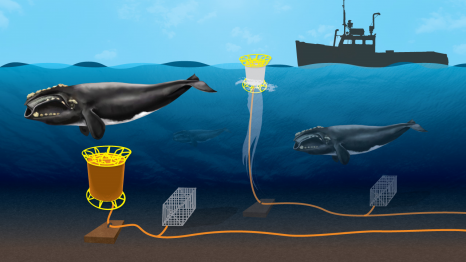
Ropeless traps could help mitigate right whale deaths, says U.S. scientist
A U.S. scientist is working on trying to stop right whale entanglements with fishing gear, which garnered increased attention after a spate of deaths this past summer. Mark Baumgartner, a biologist at the Woods Hole Oceanographic Institution in Woods Hole, Mass., has been studying North Atlantic right whales since 1999.,, One of the problems is that modern ropes are much stronger and last longer than they used to be and don’t break as easily when they come into contact with large sea animals. click here to read the story 13:49
Whale-safe Fishing Gear – New buoy for lobster traps could prevent entanglements click here to read the story
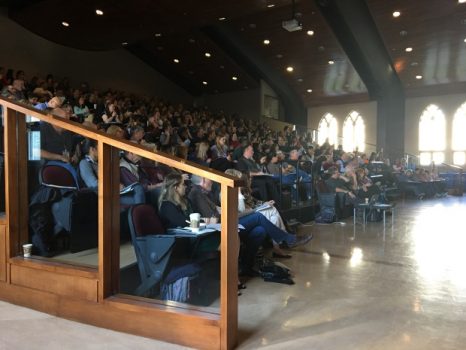
North Atlantic Right Whale Consortium – scientists say Right whales could be 20 years away from certain extinction
Scientists at an annual meeting for North Atlantic right whales estimate the species has a little over two decades left to survive unless changes are made immediately. The North Atlantic Right Whale Consortium’s annual meeting was held in Halifax on Sunday, and all of the scientists spoke with a sense of urgency about the fate of these whales. This summer, at least 15 right whales died in Canadian and U.S. waters and scientists at the conference stressed that human activity is the primary cause of death for all right whales. click here to read the story 11:21
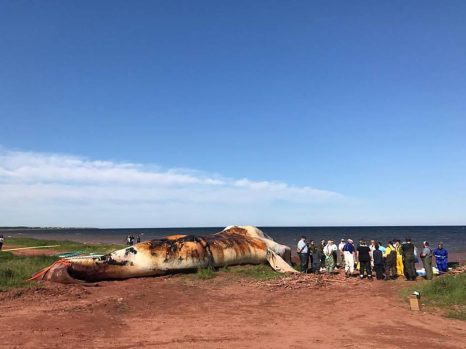
Preliminary findings of necropsies -Two whales suffered blunt trauma, another killed by fishing gear
Injuries suffered by at least two of six North Atlantic right whales found floating lifeless in the Gulf of St. Lawrence appear to be consistent with ship strikes, marine mammal experts say. Tonya Wimmer of the Marine Animal Response Society said Tuesday that the preliminary findings of necropsies on three of the whales indicate that two of them sustained blunt traumas that caused extensive bruising along their sides and internal hemorrhaging. A third died after becoming snarled in fishing rope that wrapped around one flipper and inside its mouth. click here to read the story ,,,, Whale deaths raise concern – The first dead whale spotted on June 6 was a 10-year-old male who was last seen in Cape Cod Bay on April 23 by the Center for Coastal Studies. The elapsed time between those sightings was only about six weeks. The other identified dead whales included two adult males, at least 17 and 37 years old, and a highly valuable 11-year-old female. Through DNA analysis, two of the males were known to have sired calves. The two remaining unidentified whales were a male and a female. click here to read the story 14:11
Fukushima radiation not cause for alarm in US
 Radiation from the Fukushima nuclear reactor disaster in Japan has reached North American shores, but — despite a number of reports shared on social media— scientists say the levels of radiation are so low that it poses no risk to public health. Late last year, researchers announced that Cesium-134 was discovered in waters off the coast of Oregon and in one sockeye salmon in a British Columbia lake. The news reports have been used as the basis for viral stories about the radiation. One story from alternativemediasyndicate.com carried the headline: “Fukushima Radiation: Your Days of Eating Pacific Ocean Fish Are Over, Or Worse.” Another story from organicandhealthy.org labeled the discovery of the salmon as “bad news for everyone” and described the U.S. West Coast as “contaminated.” Ken Buesseler, a senior scientist at Massachusetts’ Woods Hole Oceanographic Institution, has traveled to Japan numerous times since 2011 to study the Fukushima disaster’s effect on seawater. continue reading the story here 18:19
Radiation from the Fukushima nuclear reactor disaster in Japan has reached North American shores, but — despite a number of reports shared on social media— scientists say the levels of radiation are so low that it poses no risk to public health. Late last year, researchers announced that Cesium-134 was discovered in waters off the coast of Oregon and in one sockeye salmon in a British Columbia lake. The news reports have been used as the basis for viral stories about the radiation. One story from alternativemediasyndicate.com carried the headline: “Fukushima Radiation: Your Days of Eating Pacific Ocean Fish Are Over, Or Worse.” Another story from organicandhealthy.org labeled the discovery of the salmon as “bad news for everyone” and described the U.S. West Coast as “contaminated.” Ken Buesseler, a senior scientist at Massachusetts’ Woods Hole Oceanographic Institution, has traveled to Japan numerous times since 2011 to study the Fukushima disaster’s effect on seawater. continue reading the story here 18:19
Fukushima radiation has reached U.S. shores – Poses no danger to humans or the environment, they say.
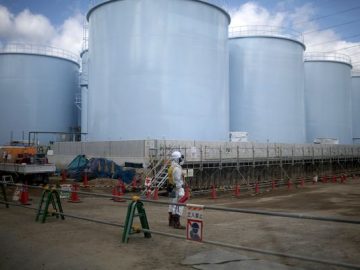 For the first time, seaborne radiation from Japan’s Fukushima nuclear disaster has been detected on the West Coast of the United States. Cesium-134, the so-called fingerprint of Fukushima, was measured in seawater samples taken from Tillamook Bay and Gold Beach in Oregon, researchers from the Woods Hole Oceanographic Institution are reporting. Because of its short half-life, cesium-134 can only have come from Fukushima. Also for the first time, cesium-134 has been detected in a Canadian salmon, the Fukushima InFORM project, led by University of Victoria chemical oceanographer Jay Cullen, is reporting. In both cases, levels are extremely low, the researchers said, and don’t pose a danger to humans or the environment. Read the rest here 16:53
For the first time, seaborne radiation from Japan’s Fukushima nuclear disaster has been detected on the West Coast of the United States. Cesium-134, the so-called fingerprint of Fukushima, was measured in seawater samples taken from Tillamook Bay and Gold Beach in Oregon, researchers from the Woods Hole Oceanographic Institution are reporting. Because of its short half-life, cesium-134 can only have come from Fukushima. Also for the first time, cesium-134 has been detected in a Canadian salmon, the Fukushima InFORM project, led by University of Victoria chemical oceanographer Jay Cullen, is reporting. In both cases, levels are extremely low, the researchers said, and don’t pose a danger to humans or the environment. Read the rest here 16:53
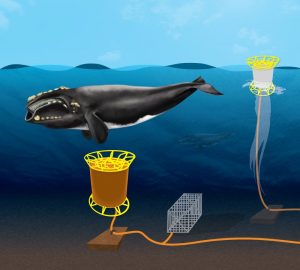
Whale-safe Fishing Gear?
More and more whales are becoming snarled in fishing gear, often dying slow, painful deaths. Two Woods Hole Oceanographic Institution (WHOI) engineers have invented a lobster trap device that they say could help whales avert entanglements and, at the same time, might allow currently restricted waters to be safely reopened for lobster fishing. In New England’s offshore lobster fishery, long vertical ropes or “lines” connect the traps on the bottom to floats on the water’s surface, so fishermen can locate their trawls and drag them back up. “The number of vertical lines in offshore areas is fairly staggering—about 20,000,” said WHOI engineer Keenan Ball who designed the new device with WHOI engineer Jim Partan. Read the story here 09:49
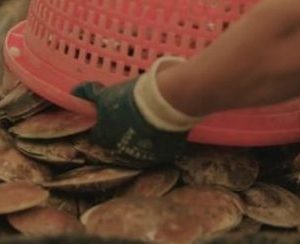
Sustaining Sea Scallops
SUSTAINING SEA SCALLOPS is a 35-minute documentary on the history and resurgence of the Atlantic sea scallop fishery, seen through the eyes of fishermen and researchers. In 1999, facing fisheries closures and bankruptcy, the scallop industry began funding a unique research program to minimize impacts on the marine environment. Fifteen years later, the Atlantic sea scallop is hailed as one of the most sustainable and lucrative fisheries in the world. From New Bedford, Massachusetts to Seaford, Virginia, fishermen and researchers tell a rare tale of renewal, offering cooperative research as a new model for sustaining healthy fisheries and fishing communities. A Connecticut fishermen describes tough times when trawl fishing went bust, and what changed once scallops started to rebound. Researchers at the Woods Hole Oceanographic Institution, the University of Massachusetts-Dartmouth, and Virginia Institute of Marine Science explain how gear innovations and better surveys ensure scallop future harvests while reducing needless harm to other species and habitat. At the heart of it all, a former NOAA Fisheries captain-turned-farmer works to increase fishermen’s access to these technologies through his non-profit research organization, the Coonamessett Farm Foundation. Watch the video here 09:52
Fishermen, Scientists Collaborate to Collect Climate Data
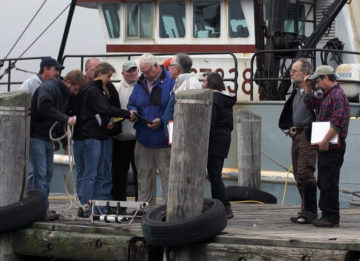 Fishermen plying the waters off the southern New England coast have noticed significant changes in recent years. Though generations of commercial fishermen have made their livings on these highly productive waters, now, they say, they are experiencing the impacts of climate change. “The water is warming up, and we see different species around than we used to,” says Kevin Jones, captain of the F/V Heather Lynn, which operates out of Point Judith, Rhode Island. To help understand the ongoing changes in their slice of the ocean, Jones and other fishermen in the region are now part of a fleet gathering much-needed climate data for scientists through a partnership with the Commercial Fisheries Research Foundation (CFRF) and Woods Hole Oceanographic Institution (WHOI). Video Read the rest here 10:02
Fishermen plying the waters off the southern New England coast have noticed significant changes in recent years. Though generations of commercial fishermen have made their livings on these highly productive waters, now, they say, they are experiencing the impacts of climate change. “The water is warming up, and we see different species around than we used to,” says Kevin Jones, captain of the F/V Heather Lynn, which operates out of Point Judith, Rhode Island. To help understand the ongoing changes in their slice of the ocean, Jones and other fishermen in the region are now part of a fleet gathering much-needed climate data for scientists through a partnership with the Commercial Fisheries Research Foundation (CFRF) and Woods Hole Oceanographic Institution (WHOI). Video Read the rest here 10:02
Scientists find a crab party deep in the ocean
 A year ago, researchers in two small submarines were exploring a seamount — an underwater, flat-topped mountain — off the Pacific coast of Panama when they noticed a dense cloud of sediment extending 4 to 10 meters above the seafloor. One of the submarines approached closer, and the scientists could soon see what was kicking up the cloud: thousands of small, red crabs that were swarming together like insects. At the densest points in the swarm, there were more than 70 crabs in a square meter of ocean bottom, and this occurred consistently in a water depth of 350 to 390 meters. The crabs, all 2.3 centimeters in carapace length and larger, were moving together in the same general direction. Some would jump and swim for about 10 centimeters or so before landing back in the pack. Video, Read the rest here 09:41
A year ago, researchers in two small submarines were exploring a seamount — an underwater, flat-topped mountain — off the Pacific coast of Panama when they noticed a dense cloud of sediment extending 4 to 10 meters above the seafloor. One of the submarines approached closer, and the scientists could soon see what was kicking up the cloud: thousands of small, red crabs that were swarming together like insects. At the densest points in the swarm, there were more than 70 crabs in a square meter of ocean bottom, and this occurred consistently in a water depth of 350 to 390 meters. The crabs, all 2.3 centimeters in carapace length and larger, were moving together in the same general direction. Some would jump and swim for about 10 centimeters or so before landing back in the pack. Video, Read the rest here 09:41
Five Years After Fukushima, Ocean Radiation Poses Little Risk to U.S.
 March 11 marks the fifth anniversary of the Fukushima Daichi nuclear power plant explosion in Japan. More than 80 percent of the radioactive material from the explosion leaked into the Pacific Ocean, released via groundwater. Dr. Ken Buesseler, an oceanographer, has spent the five years since Fukushima investigating the effects of the disaster on ocean radioactivity, through research funded by the Woods Hole Oceanographic Institution. He and his team have also sampled water near the West Coast to see if the effects of the disaster have been felt in the U.S. Read the rest here 07:51
March 11 marks the fifth anniversary of the Fukushima Daichi nuclear power plant explosion in Japan. More than 80 percent of the radioactive material from the explosion leaked into the Pacific Ocean, released via groundwater. Dr. Ken Buesseler, an oceanographer, has spent the five years since Fukushima investigating the effects of the disaster on ocean radioactivity, through research funded by the Woods Hole Oceanographic Institution. He and his team have also sampled water near the West Coast to see if the effects of the disaster have been felt in the U.S. Read the rest here 07:51
New Study: Scientists unravel whale entanglement damage
 Scientists from the Woods Hole Oceanographic Institution have released a new study documenting how much damage entanglements in fishing gear does to North Atlantic right whales — one of the most endangered of all the large whale species. Their migratory routes take them through some of the busiest commercial fishing areas along the East Coast of the United States — including the Gulf of Maine — and into . According to the institution scientists, entanglements with fishing gear represent the leading cause of death for endangered whales. Read the article here, 18:32
Scientists from the Woods Hole Oceanographic Institution have released a new study documenting how much damage entanglements in fishing gear does to North Atlantic right whales — one of the most endangered of all the large whale species. Their migratory routes take them through some of the busiest commercial fishing areas along the East Coast of the United States — including the Gulf of Maine — and into . According to the institution scientists, entanglements with fishing gear represent the leading cause of death for endangered whales. Read the article here, 18:32
Gulf Stream ring water intrudes onto continental shelf like ‘Pinocchio’s nose’
 Ocean robots installed off the coast of Massachusetts have helped scientists understand a previously unknown process by which warm Gulf Stream water and colder waters of the continental shelf exchange. The process occurs when offshore waters, originating in the tropics, intrude onto the Mid-Atlantic Bight shelf and meet the waters originating in regions near the Arctic. This process can greatly affect shelf circulation, biogeochemistry and fisheries. “I showed the glider data to a group of commercial fisherman back in April, in Rhode Island, and they were very surprised,” Read the rest here 11:05
Ocean robots installed off the coast of Massachusetts have helped scientists understand a previously unknown process by which warm Gulf Stream water and colder waters of the continental shelf exchange. The process occurs when offshore waters, originating in the tropics, intrude onto the Mid-Atlantic Bight shelf and meet the waters originating in regions near the Arctic. This process can greatly affect shelf circulation, biogeochemistry and fisheries. “I showed the glider data to a group of commercial fisherman back in April, in Rhode Island, and they were very surprised,” Read the rest here 11:05
HabCamV4 sees large numbers of young scallops off Delaware Bay
 “We’re seeing many swimming scallops and other behaviors that are providing insights into how the animals live and interact in that environment,” Hart said. “Baby scallops are seen attached to adults, and other scallops are swimming above the bottom, perhaps to diffuse to areas that are less dense and provide more room to grow.” The NEFSC’s annual sea scallop survey is conducted in three segments or “legs,” each ranging from 11 to 14 days, between May and July, beginning with the Mid-Atlantic Bight, then Southern New England and ending on Georges Bank. Read the rest here 15:10
“We’re seeing many swimming scallops and other behaviors that are providing insights into how the animals live and interact in that environment,” Hart said. “Baby scallops are seen attached to adults, and other scallops are swimming above the bottom, perhaps to diffuse to areas that are less dense and provide more room to grow.” The NEFSC’s annual sea scallop survey is conducted in three segments or “legs,” each ranging from 11 to 14 days, between May and July, beginning with the Mid-Atlantic Bight, then Southern New England and ending on Georges Bank. Read the rest here 15:10
New Tool Aims To Help Scallop Fishery Adapt To Climate Change
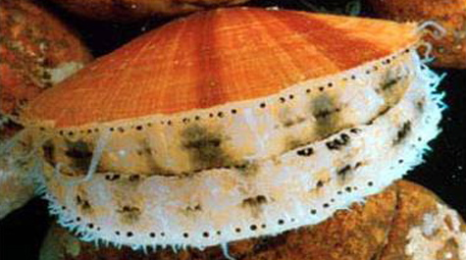 Researchers with the Woods Hole Oceanographic Institution (WHOI), National Oceanic and Atmospheric Administration (NOAA), and the nonprofit Ocean Conservancy that analyzes data on changes in the ocean, the scallop population, and the economy. The tool is unique, according to Jon Hare, director of the NOAA fisheries lab in Narragansett. He said the goal is to give scallop fisheries the chance to prepare for climate change, and “use this model to evaluate how the population would respond to ocean acidification and changes in management.” Read the rest here 12:05
Researchers with the Woods Hole Oceanographic Institution (WHOI), National Oceanic and Atmospheric Administration (NOAA), and the nonprofit Ocean Conservancy that analyzes data on changes in the ocean, the scallop population, and the economy. The tool is unique, according to Jon Hare, director of the NOAA fisheries lab in Narragansett. He said the goal is to give scallop fisheries the chance to prepare for climate change, and “use this model to evaluate how the population would respond to ocean acidification and changes in management.” Read the rest here 12:05
Securing the supply of sea scallops for today and tomorrow
 Good management has brought the $559 million United States sea scallop fishery back from the brink of collapse over the past 20 years. However, its current fishery management plan does not account for longer-term environmental change like ocean warming and acidification that may affect the fishery in the future. A group of researchers from Woods Hole Oceanographic Institution (WHOI), National Marine Fisheries Service, and Ocean Conservancy? hope to change that. Read the rest here 17:18
Good management has brought the $559 million United States sea scallop fishery back from the brink of collapse over the past 20 years. However, its current fishery management plan does not account for longer-term environmental change like ocean warming and acidification that may affect the fishery in the future. A group of researchers from Woods Hole Oceanographic Institution (WHOI), National Marine Fisheries Service, and Ocean Conservancy? hope to change that. Read the rest here 17:18
Scientists, academics to lead groundfish study
A group of scientific and academic institutions is leading a researching initiative about the groundfish stocks in the Gulf of Maine and Georges Bank. The federal New England Fishery Management Council is giving $800,000 to the Northeast Consortium for the project. Read the rest here 08:11
Ocean Acidification Is an Imminent Threat for Alaska Fishing Communities
Keeping Alaska’s fisheries wild and sustainable is going to be a serious challenge in the years ahead as our oceans become more acidic, and that in turn, is going put many Alaskans’ subsistence way of life at risk, says a new report. Minor says the problem is “still far enough over the horizon” that local fishermen haven’t seen any impacts on the fishing grounds, but adds, “those of us who are paying attention are worried.” Read more here 16:45
Woods Hole allies with energy firms
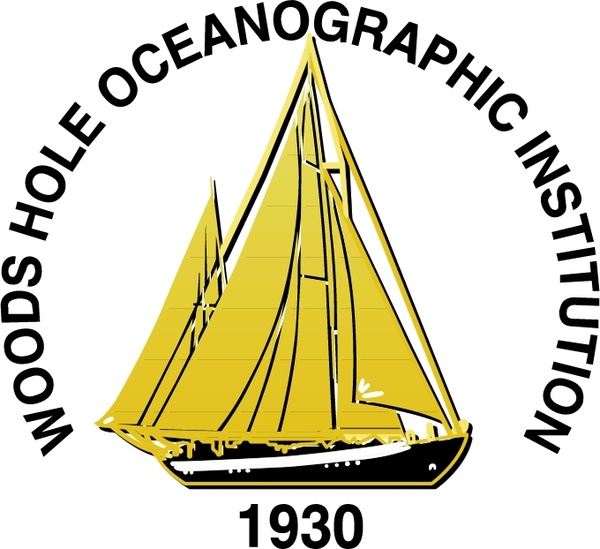 In the coming days, according to officials at Woods Hole, the institution is set to sign agreements with Saudi Aramco, the primary oil company owned by the Saudi government, to study the potential for “hydrocarbons” in the Red Sea. It is also preparing to ink a deal for a “simulation study” on behalf of the Italian oil company Eni, while it has half a dozen other proposals in the works with unnamed corporations, the officials said. Yet earlier this month, Woods Hole coauthored the Obama administration’s National Climate Assessment, which partly blamed hydrocarbons for causing climate change and damaging oceans. Read more here 13:10
In the coming days, according to officials at Woods Hole, the institution is set to sign agreements with Saudi Aramco, the primary oil company owned by the Saudi government, to study the potential for “hydrocarbons” in the Red Sea. It is also preparing to ink a deal for a “simulation study” on behalf of the Italian oil company Eni, while it has half a dozen other proposals in the works with unnamed corporations, the officials said. Yet earlier this month, Woods Hole coauthored the Obama administration’s National Climate Assessment, which partly blamed hydrocarbons for causing climate change and damaging oceans. Read more here 13:10
It’s not every day scientists discover a new ocean current.
Well, in 2004, two Icelandic researchers announced that they’d found what they thought was a whole new ocean current flowing south through the Denmark Strait, off the east coast of Greenland. They called it The North Icelandic Jet, and they hypothesized that it supplied half the deep, southerly-flowing water that counter-balances the Gulf Stream. Dr. Bob Pickart a senior scientist at Woods Hole Oceanographic Institution, was immediately intrigued by the North Icelandic Jet. Was it real? Where did it come from? How much water did it carry? Read more@capeandisland 15:32
FAQ: Radiation from Fukushima – and Answers from Ken Buesseler, Woods Hole Oceanographic Institution
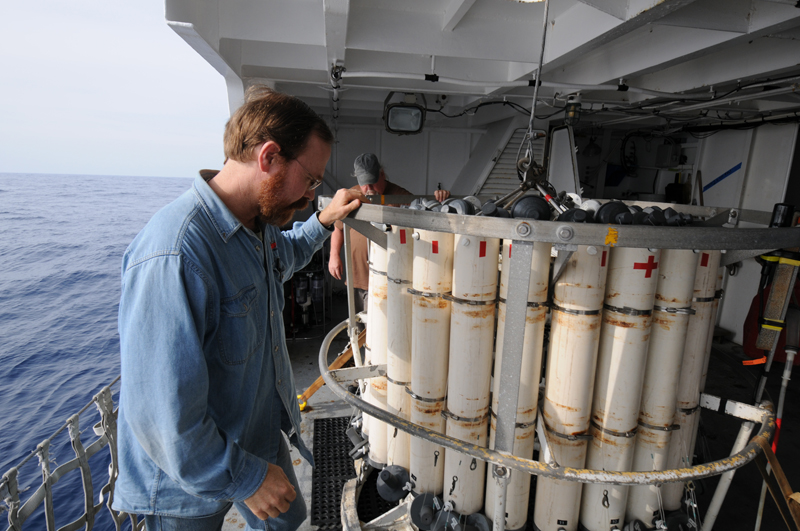 Since mid-2011, I have worked with Japanese colleagues and scientists around the world to understand the scope and impact of events that continue to unfold today. In June 2011, I organized the first comprehensive, international expedition to study the spread of radionuclides from Fukushima into the Pacific, and I or members of my lab have participated in several other cruises and analyzed dozens of samples of water, sediment, and biota. In addition, I began my career in oceanography by studying the spread of radionuclides from Chernobyl in the Black Sea. These are a few of the most common questions that people have been asking me lately. more from Ken Buesseler 14:48
Since mid-2011, I have worked with Japanese colleagues and scientists around the world to understand the scope and impact of events that continue to unfold today. In June 2011, I organized the first comprehensive, international expedition to study the spread of radionuclides from Fukushima into the Pacific, and I or members of my lab have participated in several other cruises and analyzed dozens of samples of water, sediment, and biota. In addition, I began my career in oceanography by studying the spread of radionuclides from Chernobyl in the Black Sea. These are a few of the most common questions that people have been asking me lately. more from Ken Buesseler 14:48
Alaska fishermen and fish consumers shouldn’t be concerned about the new disclosures of radioactive water leaking into the Pacific Ocean
The amount of radioactive material flowing into the ocean is relatively minimal, compared to the size of the spills that occurred in the wake of the meltdowns that occurred at the site in 2011 following an earthquake and tsunami, said Ken Buesseler, a senior scientist at the Woods Hole Oceanographic Institution in Massachusetts. more@adn
New study reveals how sensitive US East Coast regions may be to ocean acidification
Zhaohui Wang, Woods Hole Oceanographic Institution, and his colleagues sampled the waters off the US East Coast about the R/V Ron Brown. Starting in the waters off Galveston, Texas, they worked their way around the Louisiana and west Florida coasts, past the Florida Straight, and up the eastern seaboard,,,,,,,read more
Newly minted U.S.Senators Warren and “Mo” Cowan sit with fishing industry
What Elizabeth Warren and William “Mo” Cowan heard was a broad sampling of many of the deep concerns of those groundfishermen whose livelihoods are nearly gone thanks to catch restrictions. Animosity toward government-sponsored researchers at the Woods Hole Oceanographic Institution was clear. Rodney Avila, a former regional fisheries council member, said “We need to drop an atom bomb on Woods Hole.” Several in the meeting cautioned the senators to expect a great deal of lobbying from environmental groups that support the sector management and catch shares that are blamed for the collapse of the industry. Read more
Woods Hole gets $5.2M to research marine microbes from Gordon and Betty Moore Foundation
FALMOUTH, Mass. (AP) — The Woods Hole Oceanographic Institution says it’s been awarded $5.2 million this year to support research on a critical component of ocean health — marine microbes. Read More
New study shows dispersant makes oil up to 52 times more toxic to Gulf of Mexico microorganisms
Followup studies after the 2010 Deepwater Horizon oil spill call into question the extensive use of chemical dispersants. Photo courtesy NOAA.
FRISCO — The massive amounts of oil that spilled into the Gulf of Mexico after BP’s Deepwater Horizon drill rig exploded was devastating to marine life, but the dispersant used in the aftermath to try and break down the oil slicks may have been even worse for some species, according to new research done by scientists with the Georgia Institute of Technology and Universidad Autonoma de Aguascalientes, Mexico. http://summitcountyvoice.com/2012/12/01/environment-new-study-shows-dispersant-makes-oil-up-to-52-times-more-toxic-to-gulf-of-mexico-microorganisms/
News Release – Scientists Uncover Diversion of Gulf Stream Path in Late 2011-Warmer waters flowed to shelfbreak south of New England-(WHOI)
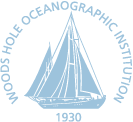 At a meeting with New England commercial fishermen last December, physical oceanographers Glen Gawarkiewicz and Al Plueddemann from the Woods Hole Oceanographic Institution
At a meeting with New England commercial fishermen last December, physical oceanographers Glen Gawarkiewicz and Al Plueddemann from the Woods Hole Oceanographic Institution
(WHOI) were alerted by three fishermen about unusually high surface water temperatures and strong currents on the outer continental shelf south of New England.
“I promised them I would look into why that was happening,” Gawarkiewicz says. The result of his investigation was,,, Read More






